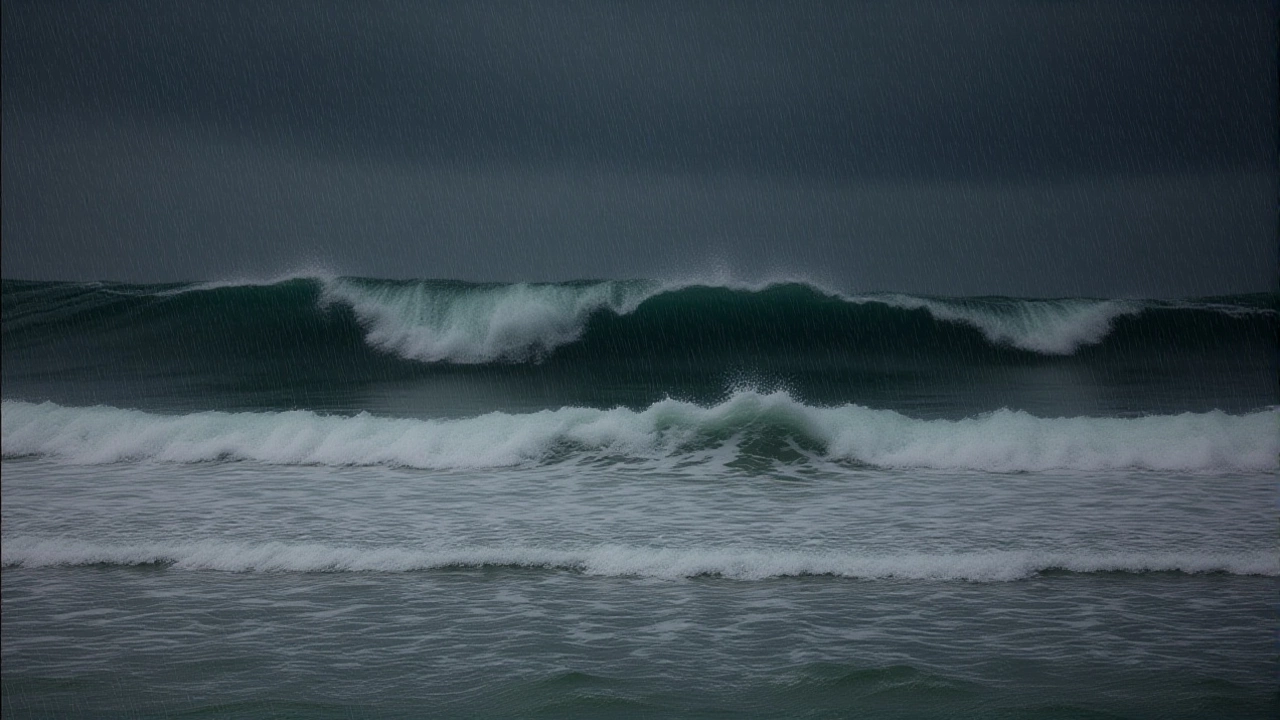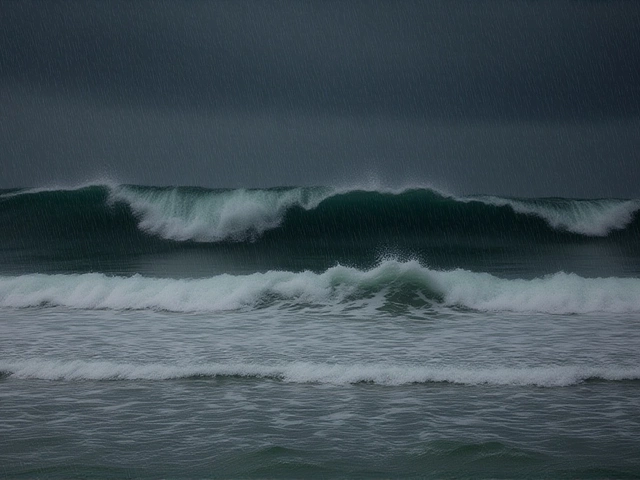When Storm BenjaminSpain slammed the Iberian Peninsula on Thursday, October 23, 2025, the nation’s meteorological agency AEMET issued a cascade of alerts that ranged from yellow in the Balearic Islands to red in Cantabria and the Basque Country. In the island capital of Palma, wind gusts peaked at 73 kilometres per hour, while tide‑pounded beaches on the northern coast reported waves that broke 5‑metre tall. The storm’s ferocity forced local authorities to halt ferry services, close schools and urge residents to stay indoors.
- Date: October 23, 2025
- Peak wind speed: 73 km/h in Palma
- Highest alert level: Red in Cantabria and the Basque Country
- Regions under orange warning: Murcia, Valencian Community, parts of northern Spain
- Next‑day outlook: Light rain expected to linger in interior areas
What Happened and When
Storm Benjamin arrived as a cold front slamming into a warm Mediterranean sea, a classic recipe for intense low‑pressure development. By early morning, satellite images showed a tight pressure gradient hugging the Pyrenees, funneling winds straight toward the coast. The front’s centre moved eastward across the Atlantic coast of France before hugging Spain’s northern shoreline. By mid‑day, gusts in the Basque Country topped 90 km/h, prompting the red‑level warning that AEMET described as “dangerous for life and property.”
How the Storm Unfolded Across Spain
In the Balearic Islands, the yellow alert was triggered after the meteorological model predicted sustained winds above 60 km/h for several hours. At Playa de Palma, onlookers filmed swaying palm trees and sand‑laden air that made the beach look more like a windy desert than a summer haven. Further north, Cantabria’s rugged coastline saw water levels rise by nearly a metre, closing the port of Santander for the afternoon.
Meanwhile, the western provinces of Galicia and Asturias wrestled with torrential rain that dumped over 60 mm within two hours. The combined effect of wind and precipitation set off flash‑flood warnings in the interior valleys of León, where rivers briefly overtopped their banks. In the central plateau, light drizzle lingered well into the evening, a reminder that the system’s tail would not disappear instantly.
Official Alerts and Their Meaning
AEMET’s alert matrix uses three colour bands: yellow for potentially hazardous, orange for serious, and red for dangerous. On Thursday, the agency announced:
- Red alerts: Cantabria and the Basque Country – “life‑threatening conditions, especially for maritime activity and exposed infrastructure.”
- Orange alerts: Murcia, Valencian Community, Galicia, Asturias – “serious risk of wind damage, localized flooding, and travel disruption.”
- Yellow alerts: Balearic Islands, Catalonia, Andalusia – “hazardous conditions possible; public advised to secure loose objects.”
Speaking to reporters from Madrid, Carlos Jiménez, a spokesperson for AEMET, said, “The rapid deepening of the low over the Bay of Biscay caught many off guard. We’ve activated the highest level of warnings where the wind exceeds 80 km/h and visibility drops below 200 m.”
Impact on Communities and Infrastructure
In Palma, the municipal council reported three power outages affecting roughly 2,400 households, while several historic buildings along the promenade suffered minor façade damage. The port of Valencia, still operating under orange conditions, delayed 12 cargo ships, costing an estimated €1.2 million in missed docking time.
Roads across Cantabria turned slick, leading to 27 reported accidents, two of which required ambulance assistance. The comarca of Bizkaia saw a school closure for 48 hours as roof tiles were dislodged by gusts that exceeded 95 km/h in the highlands.
Tourism operators in the Balearic Islands, which had just launched a weekend promotion, were forced to refund nearly 1,800 bookings. A local hotel owner lamented, “We were expecting a record weekend; instead we’re cleaning sand out of rooms and waiting for the winds to calm.”
Looking Ahead: Forecasts and Recovery
By Thursday afternoon, the core of Storm Benjamin began to weaken as it moved over the cooler Atlantic waters off northern Portugal. AEMET’s models suggest that rain will taper off in the interior by Friday evening, though patchy showers could linger in the eastern valleys until Saturday.
Authorities in the Basque Country have already dispatched emergency crews to clear debris and inspect damaged power lines. The regional government announced a €3 million fund to assist residents whose homes suffered structural damage, with applications opening on Monday.
For the rest of Spain, the coming weekend looks milder. The lingering heatwave that hit the south over the previous week will likely be broken by cooler Atlantic breezes, giving the Andalusian coast a chance to recover before the next Atlantic low forms in early November.
Frequently Asked Questions
Why did Storm Benjamin become so intense over Spain?
The storm tapped a strong temperature contrast between cold Atlantic air and the warm Mediterranean Sea. This clash deepened the low‑pressure centre, accelerating winds to over 90 km/h along the northern coast and generating heavy rain bands that slammed into the interior.
Which regions faced the highest danger level?
Red alerts were issued for Cantabria and the Basque Country, indicating life‑threatening conditions. Orange warnings covered Murcia, the Valencian Community, Galicia and Asturias, while the Balearic Islands and Catalonia were under yellow alerts.
What were the main impacts on daily life?
Power outages affected over 2,000 homes in Palma, ferry services were suspended, schools closed in the Basque Country, and road accidents rose due to slick conditions. The tourism sector in the Balearic Islands faced mass refunds, and port operations were delayed, costing millions.
When can residents expect the rain to stop?
AEMET predicts that the heaviest rain will subside by Friday evening across most of the interior, with only isolated showers lingering into Saturday in eastern valleys.
How are authorities helping those who suffered damage?
The Basque regional government has mobilised emergency crews to clear debris and inspect infrastructure. Additionally, a €3 million aid package has been approved for homeowners in the most affected provinces, with applications opening next week.





